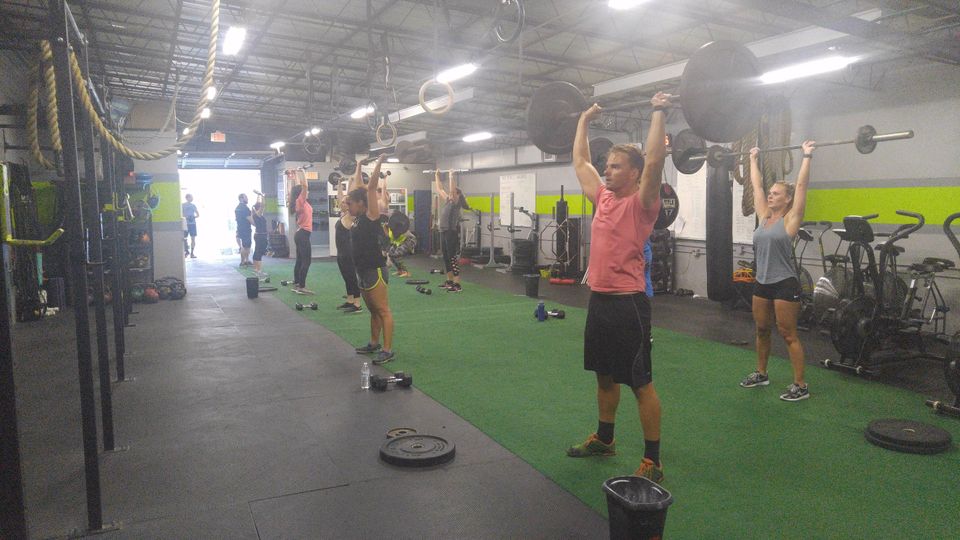SEX DIFFERENCES IN STRENGTH & POWER
Those of you who know me, know about my passion towards Coaching and helping others with the desire to become better human beings. I do believe that everyone of us has the ability to want to become better and improve, but most are not willing to put forth the effort to be that better person. This is something we preach at HIT Fitness Warehouse, and similarly so does the crew at Gym Jones. You might also know that I have been training and learning for the last 3 years out at Gym Jones in Salt Lake City, Utah and I have been fortunate enough to meet, been taught by, trained with, and have been befriended by some of the best people this world has to offer. No matter how much one knows, there is always more out there to be learned. Below is a little Insight on what Certified Gym Jones Instructor Jenna Link has to say on the subject of MEN vs WOMEN. Jenna....what you have to say on this subject is nothing short of brilliant!
SEX DIFFERENCES IN STRENGTH & POWER
We’ve talked before about the differences between men and women when it comes to fiber type distribution as well as body composition. But what does that really mean? Are there any functional implications?
If you asked me these questions when I was in the lab I would probably say well… it depends. And then I would pepper you with questions. What’s her training status? What was it 10 years ago? What is her body type? How much does she weigh? What about body fat?
But, if you catch me in the gym I would promptly invite you to load a barbell with 2x bodyweight and we’d sort it out.
The literature on this topic is too scarce and of course mixed. However, there are some common themes that underpin why we sometimes see sex differences in strength and power: body size and training status.
Strength & Power
To start with I want to clearly define what I mean by strength and power. When I say strength I am really referring to raw force production. When I say power I mathematically mean force x velocity. Both are determined by a multitude of variables: muscle-cross sectional area, contractile velocity, neurological control, and even pennation angle. We are living at the far left end of the fitness continuum here focusing purely on quick and explosive movements. Think deadlifts, squats, vertical jumps, power cleans, you get the picture.
Sex Differences – Absolute Values
When compared to men, women tend to be able to produce (on average) two-thirds of what their male peers can produce(1). This sex related difference in not consistent throughout the body though with values for the lower limbs being much closer to men and values for the upper body being much further away(1,2). However, men have much larger body sizes, more body mass, more fat-free muscle mass, and a different distribution of fat-free mass than women.
It’s All Relative
When strength and power are considered relative to fat-free mass sex related differences tend to disappear(1-4). I use the phrase “tend to” because there are many confounding variables. Several studies of trained men and women matched for activity level show no gender difference in strength between men and women when expressed relative to fat-free mass(3). However, several other studies have shown significant differences do exist(2-4).
Of the studies that show a difference there are two major criticisms. First, we tend to see significant differences in strength and power when untrained individuals are tested(3). This could be physiological, but it could also be the result of significant gender differences in lifelong physical activity levels(5). Therefore, activity level needs to be carefully controlled when comparing these two groups(3).
Secondly, when strength and power are expressed relative to cross-sectional area rather than just fat-free mass the sex related differences almost completely disappear(1-4). Why the difference? Well, fat-free mass isn’t purely skeletal muscle it includes bone, connective tissue, water, etc. So when we isolate only muscle we see almost no difference in strength and velocity characteristics between men and women.
But, just to twist the story one more time. A few different authors have shown that even when expressed relative to cross-sectional area women have lower strength and power capabilities than men in the upper body(2,6). I have to wonder though if this can’t also be partly explained by differences in physical activity. How many women do you know who have bench pressed regularly? While I can’t give you the answer right now, what I can tell you is that my interest is sparked. Don’t be shocked if you get recruited to participate in a study in the near future.
Conclusion
While it is clear that there are absolute differences in strength and power between men and women, these differences tend to disappear when relative strength and power are considered. Things such as body size, skeletal muscle mass, and training status will all have a significant impact on absolute values. There is some evidence that lower body strength is less affected than upper body strength, but this is primarily due to differences in skeletal muscles mass distribution between men and women. The science isn’t perfect yet, but more often than not we see that pound for pound women are just as strong and powerful as men.
0. Baechle, Thomas R., Earle, Roger W., and National Strength & Conditioning Association. Essentials of Strength Training and Conditioning. 3rd ed. 2008. Print.
0. Miller, A.E.J., et al., Gender differences in strength and muscle fiber characteristics. European journal of applied physiology and occupational physiology, 1993. 66(3): p. 254-262.
0. Jones, E.J., et al., Cross-sectional area and muscular strength. Sports Medicine, 2008. 38(12): p. 987-994.
0. Trappe, S., et al., Single muscle fibre contractile properties in young and old men and women. The Journal of physiology, 2003. 552(1): p. 47-58.
0. Hunter, S.K., Sex differences in human fatigability: mechanisms and insight to physiological responses. Acta physiologica, 2014. 210(4): p. 768-789.
0. Hoffman, T., R.W. Stauffer, and A.S. Jackson, Sex difference in strength. The American journal of sports medicine, 1979. 7(4): p. 265-267.












